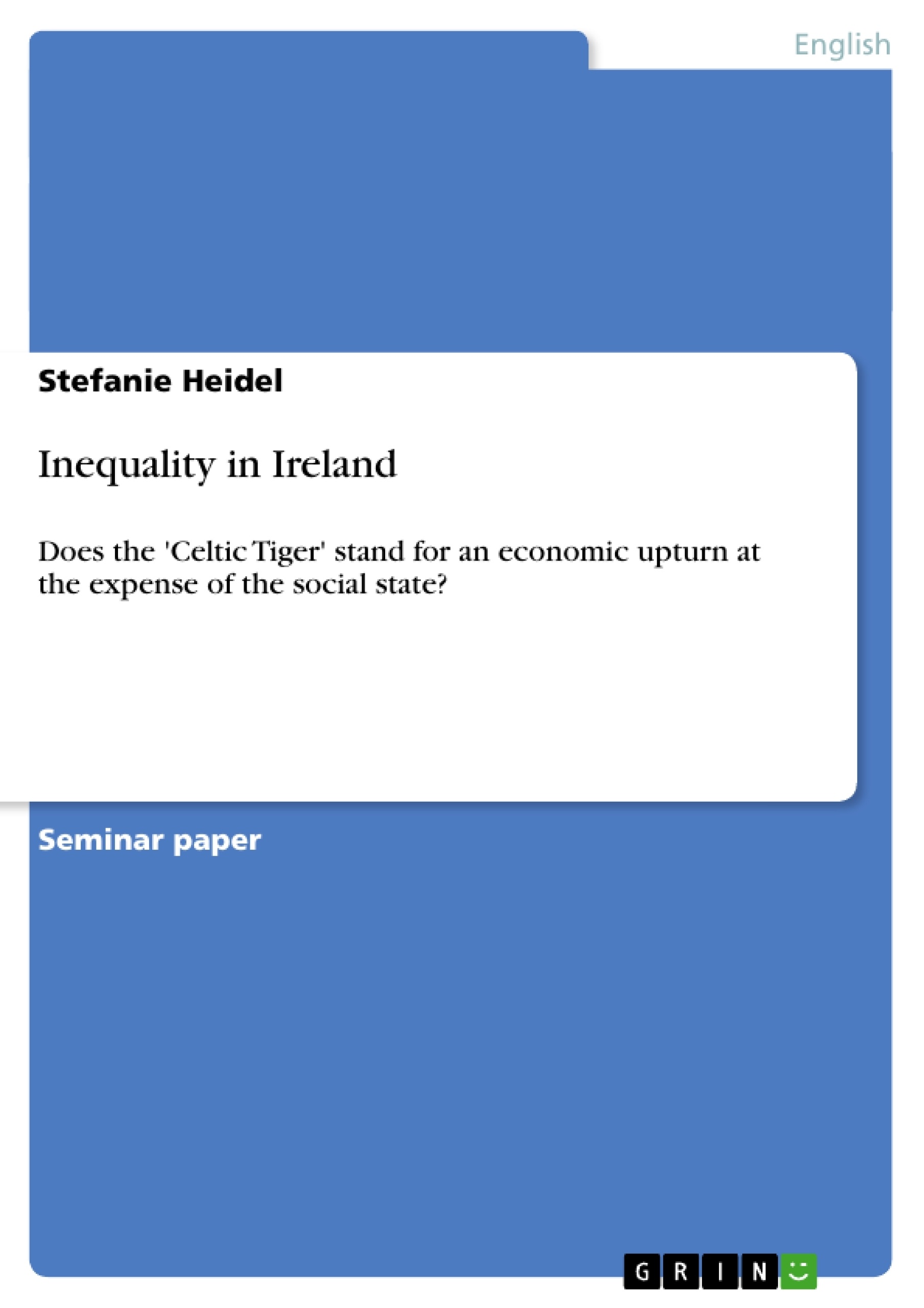Ireland, also known as the Green Isle, is known for its sheep, wide meadows, and its mystical stories as well as for their hard-drinking men. For the rest of the world Ireland always was a kind of magic place, although their real history was never a fairy tale. Suppressed (with intermissions) by the English since the end of the 12th century, Ireland had to face many strokes of faith. They were persecuted and punished because of their religion; their land was dispossessed by the English landlords and during the Great Famine in the 1840s a million Irish people should have died. (cf. Donelly, Jim, p. 1) However, in the first half of the 20th century their fight for independence was rewarded and Ireland became a Republic. Even though, the development of an autonomous economy was no bed of roses for the newly founded Republic. In the 1950s a change in the economic policy made Ireland’s economy more liberal and open-minded to foreign investment. (cf. Kirby, p.12) Nevertheless, groundbreaking success failed to appear. As late as in the end of the 1980s Ireland’s successful story got going. From then on a rapid growth in economy took place and soon the Green Isle grew from a “Third-World-Country-in-Europe” to one of the wealthiest on the continent. Due to the just mentioned facts, Ireland was at the end of the 1990s in a fortunate position and a rich and productive country.......
Inhaltsverzeichnis (Table of Contents)
- Introduction.
- Prehistory.
- Ireland's economy after 1922.
- Development until the 1980s...
- Ireland becomes the Celtic Tiger.
- Growing of Inequality in Ireland.
- Income...
- Taxation and Social Welfare..
- Education..
- Poverty
- Health Care System .........
- The Irish Dilemma
- Recent Present and Future.
Zielsetzung und Themenschwerpunkte (Objectives and Key Themes)
This text aims to explore the economic and social development of Ireland in the latter half of the 20th century, focusing on the emergence and consequences of the "Celtic Tiger" phenomenon. It examines how a country that had struggled economically for decades achieved rapid economic growth, while concurrently experiencing significant social inequalities. The text aims to provide an analysis of this complex situation, highlighting the potential costs of rapid economic development.
- Economic transformation in Ireland from a post-colonial state to a high-growth economy
- The impact of the Celtic Tiger on social inequality and the welfare state
- Analysis of income disparities, housing conditions, education, and health care systems
- Evaluation of the Irish government's policies and their effects on social well-being
- The Irish dilemma of balancing economic prosperity with social cohesion
Zusammenfassung der Kapitel (Chapter Summaries)
The initial chapter introduces Ireland's historical background, highlighting its struggles with colonial suppression, religious persecution, and the devastating Great Famine. It then outlines the country's journey toward independence and the subsequent challenges in establishing a stable and prosperous economy. The chapter concludes by highlighting the stark contrast between Ireland's economic success and its widening social inequalities, setting the stage for further exploration.
The second chapter delves into Ireland's economic history, analyzing the period after independence in 1922. The chapter explores the country's economic stagnation, attributed to factors like the absence of industry and a conservative government. It then investigates the shift towards a more liberal economic policy in the 1950s, characterized by foreign investment and attempts to achieve greater self-sufficiency.
The third chapter will focus on the rise of the Celtic Tiger phenomenon, examining the rapid economic growth that Ireland experienced in the late 1980s and 1990s. It will analyze the key drivers of this economic boom, including foreign direct investment, technological advancements, and government policies.
Chapter four, "Growing of Inequality in Ireland," explores the social consequences of Ireland's economic success. This chapter will examine the widening gap between the rich and the poor, focusing on areas such as income disparities, taxation, social welfare programs, education, poverty, and health care systems.
Schlüsselwörter (Keywords)
This text focuses on economic development, social inequality, and the Celtic Tiger phenomenon in Ireland. Key themes include economic growth, foreign investment, income disparity, social welfare, education, poverty, and health care systems. Additionally, it explores the impact of rapid economic growth on social cohesion and the role of government policies in shaping social outcomes.
- Citation du texte
- Stefanie Heidel (Auteur), 2009, Inequality in Ireland, Munich, GRIN Verlag, https://www.grin.com/document/137170



